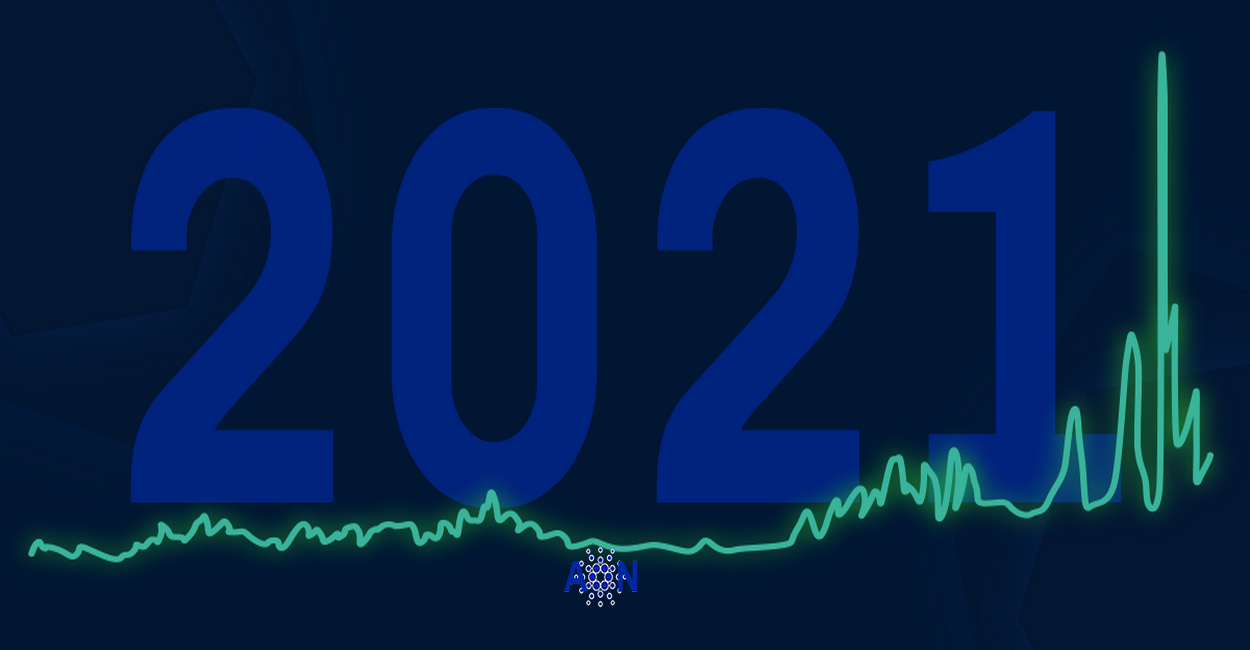The first three phases of the Cardano roadmap, Byron, Shelley, and Goguen are now mostly deployed, enabling diverse ecosystem engagement and network growth. Major developments include full decentralization of block generation and full application coverage in Cardano, including data storage, asset creation and smart contract capabilities. Next year will take us first to Basho and then to Voltaire. Basho’s focus will be on scaling the network to billions of enterprise-level transactions, while Voltaire will focus on increased governance on the chain.
But before we look further, let’s take a look at our achievements and progress in 2021, a year of continued growth, technical innovation, community expansion and partnerships.
Reaching new milestones on the Cardano blockchain
Throughout 2021, the Cardano ecosystem has reached several key milestones. These milestones have helped drive blockchain adoption and ultimately expanded our community to record numbers. Two areas in particular have made progress towards on-chain adoption and use:
Addition of Native Tokens – This new feature was enabled in March, Cardano allows trading and creation of multiple assets. As a third generation blockchain, Cardano has a unique design to have a multi-asset ledger.
Why is this important? – Cardano users can directly generate private tokens and execute transactions directly without the need for smart contracts. This offers distinct advantages for developers as it is a unified process for asset creation and management. For example, since the ledger handles all token-related functions, there is no need to create smart contracts to handle custom tokens, thus eliminating the added layer of complexity and the possibility of manual errors.
Smart Contract Capability – Alonzo Hard Fork brought programmability to Cardano in September 2021. It enabled the creation and deployment of Plutus-powered smart contracts, enabling us to prepare for our next technical era, Basho.
Why is this important? – It is now possible for developers to build decentralized applications (DApps) and decentralized finance (DeFi) use cases on the Cardano blockchain. This opened up the ecosystem to more opportunities for on-chain use.
These developments have led to rapid growth on the chain, for example we exceeded 23 million transactions in December! Community aggregators of Cardano projects estimate that there are about 274 projects currently in development or actively working on the network. These projects span a number of different industries, from insurance, payments, lending and borrowing to wallets, stablecoins, decentralized finance and decentralized exchanges.
Additionally, Cardano currently has more than 2.5 million native assets, of which more than 2 million are Fungible Tokens (NFTs).
There are many other success moments, some of which we highlight in the timeline below.
Read More: Source
Disclaimer: What is written here is not investment advice. Cryptocurrency investments are high-risk investments. Every investment decision is under the individual’s own responsibility.
